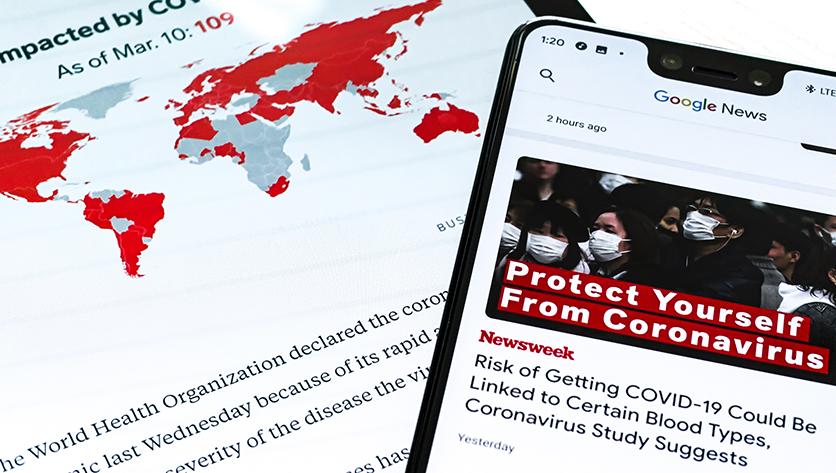Coronavirus (COVID-19) and Risk: Could we have prepared for this pandemic?

Professor Charles Yoe, director of Notre Dame of Maryland University’s risk management programs says that analyzing risk with COVID-19 and other pandemic-like situations can help predict and prepare for the worst…or best outcomes.
He explains in this Q & A how risk analysis works.
How can risk analysis help us deal with a pandemic like COVID-19?
The universe has handed us a perfect example of risk analysis at work. COVID-19 presents virtually every individual on the planet with a varying degree of risk of illness, hospitalization or death. The chance of such an undesirable outcome for any individual varies of course and depends on a great many factors. Risk analysis enables us to make decisions based on the best available science and evidence while taking social values into consideration.
Why is it important to measure risk?
The institutionalized elderly with underlying health conditions in nations with limited healthcare infrastructure have the greatest chance of an undesirable outcome and that increases in regions that do not take the precautions of social distancing, handwashing and the like. Healthy young individuals who live in countries with testing, good healthcare facilities and who practice social distancing and other mitigation measures have a much lower chance of personal illness. Each of us has our own degree of risk and having some knowledge about it is important.
What are the basic tasks necessary to do risk analysis for COVID-19?
Risk assessment, risk management and risk communication are the three tasks that constitute risk analysis.
How does risk assessment work?
The appearance of COVID-19 invited comparisons with influenza, if for no other reason than we had little to no scientific facts about this novel virus, but we did understand the flu. COVID-19 was an unknown hazard and the world community has done a remarkable job of reducing the uncertainty about this disease in a short period of time, although there is still a great deal we do not know. Risk assessment is a systematic science-based process for describing the nature, likelihood, and magnitude of the COVID-19 risk that includes consideration of relevant uncertainties.
There are many experts and world leaders making decisions about the coronavirus and its impact. How does this play a role?
Decision makers and leaders around the world have been forced to make very difficult decisions in the face of uncertainty about the nature of this disease. The impacts of these decisions will resonate with us for decades. Because of the uncertainty there is legitimate room for people to disagree on the nature and extent of the measures taken. Risk management considers the science and the risk assessment then it initiates actions to identify, evaluate, select, implement, monitor, and modify actions we can take reduce COVID-19 risk to acceptable or tolerable levels.
And how about the public? How are they kept informed?
News sources and professionals trained in the health sciences have been pressed into duty to explain the nature of the risk as well as the measures to be taken to reduce those risks. Risk communication is the open, two-way exchange of information and opinion about COVID-19 risks intended to lead to a better understanding of the risks and better risk management decisions.
What are the results of these three tasks of risk assessment when considering COVID-19?
Risk assessment is getting better as we learn more about this disease. Risk management and risk communication have been uneven. Some are doing them well others are learning from their mistakes as they go. Government, industry and a great many individuals are learning some difficult lessons about risk management.
The world will be better prepared for pandemic risk as a result of this shared experience of being unprepared. The science of risk analysis would suggest it is better to know and practice risk management so as to be better prepared.
How can risk analysis help us moving forward?
The measures we have taken have created risks of their own. Quarantine and social distancing increase stress and other non-COVID-19 health issues. We are seeing increases in domestic violence. Loss of a job and income will mean a great deal of suffering, including suicide, mental illness, malnutrition, crime, and any number of personal and social problems. That does not even begin to consider the other economic consequences of this pandemic and the actions we have taken to combat it. The world is full of risk-risk trade-offs and no organization, public or private can afford to be unprepared for what is coming next.
Risk Management at NDMU
The fully online NDMU programs in risk management include a MS in Risk Management and a Certificate in Risk Assessment and Management. The U.S. Army Corps of Engineers has chosen and repeatedly utilized the NDMU Risk Management programs to train its members.




